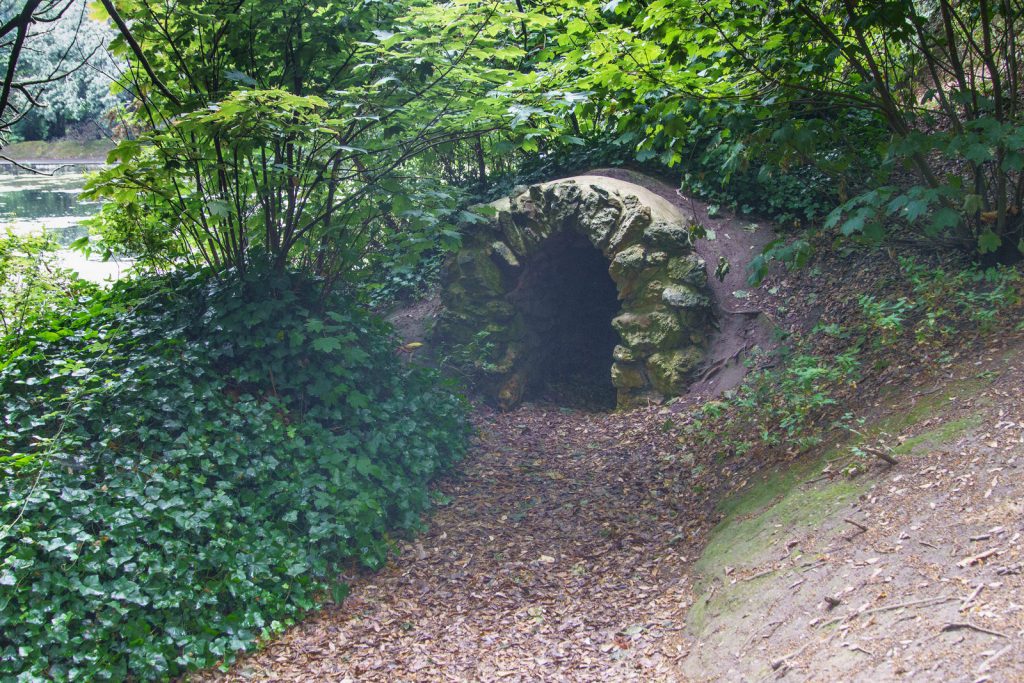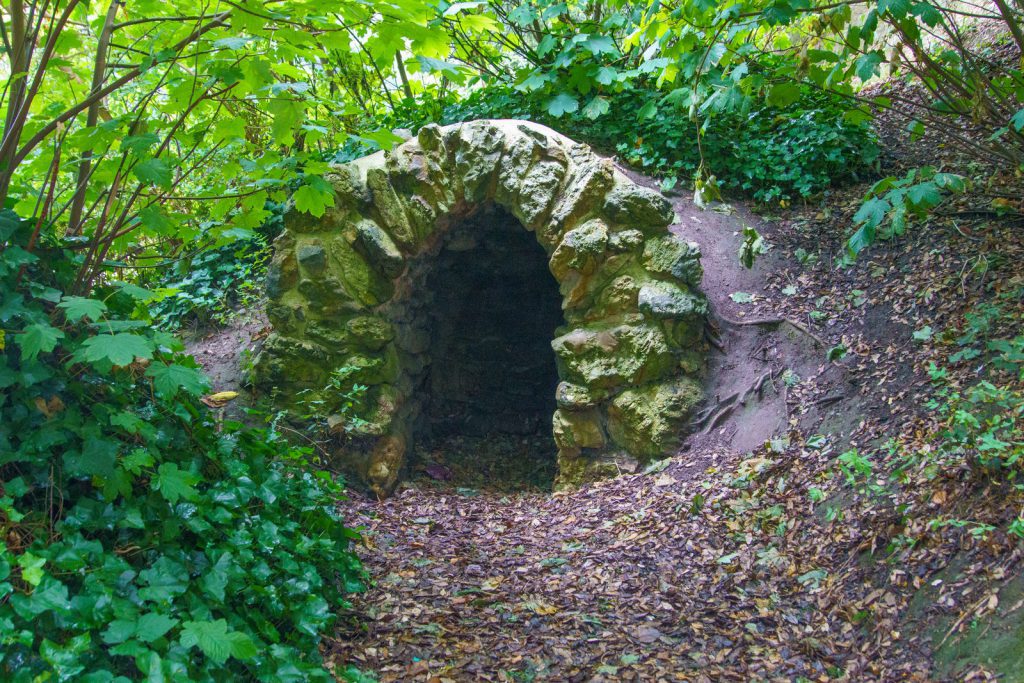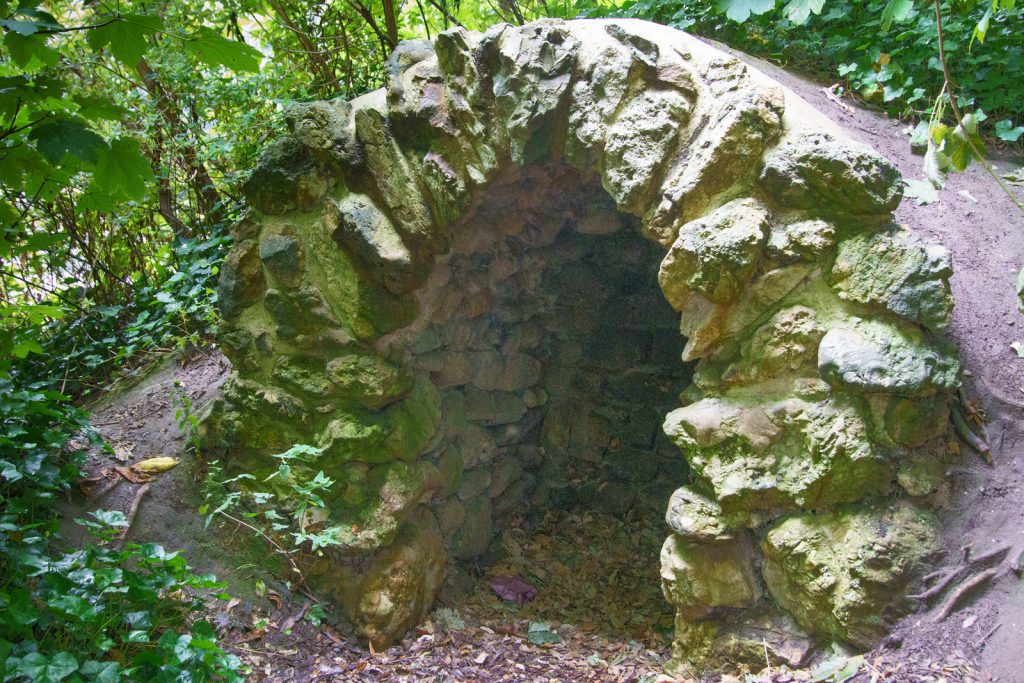PHOTOGRAPHED 15 AUGUST 2022
For some reason the Spelling is St Ann’s rather than St Anne’s.
When I visited in the past I have noticed people referring to this structure, which attracts children and dogs, as the fairy house.
St Anne’s Park was named after the existing holy well there in 1837 by Sir Benjamin Lee Guinness.
The well site has a protective hood of stones, and lies just beyond the old lake of the park, with its Roman temple, and below the Watchtower folly, near the main coastal entrance.
The well itself dried up in the 1950s, and although Dublin City Council made several attempts to relocate the source, it remains dry as of 2022. The site is still respected, and was visited in 2000 by a formal joint procession of worshippers from the Raheny parishes of the Roman Catholic Church and Church of Ireland. The site was cleaned of soil and vegetation by a specialist contractor in early 2018, the original well opening located, and a safety grille, also keeping leaves out, was fitted over the former outlet.
St. Ann’s Well was reputed to provide virtues to pilgrims, and many came to drink or bathe in its waters. There is no altar associated with the Well at St. Anne‟s, nor are there records available as to any pilgrimage circles or other such features. The location of the Well is sheltered by trees, and historically it would have been easily accessible from the Clontarf Road.


